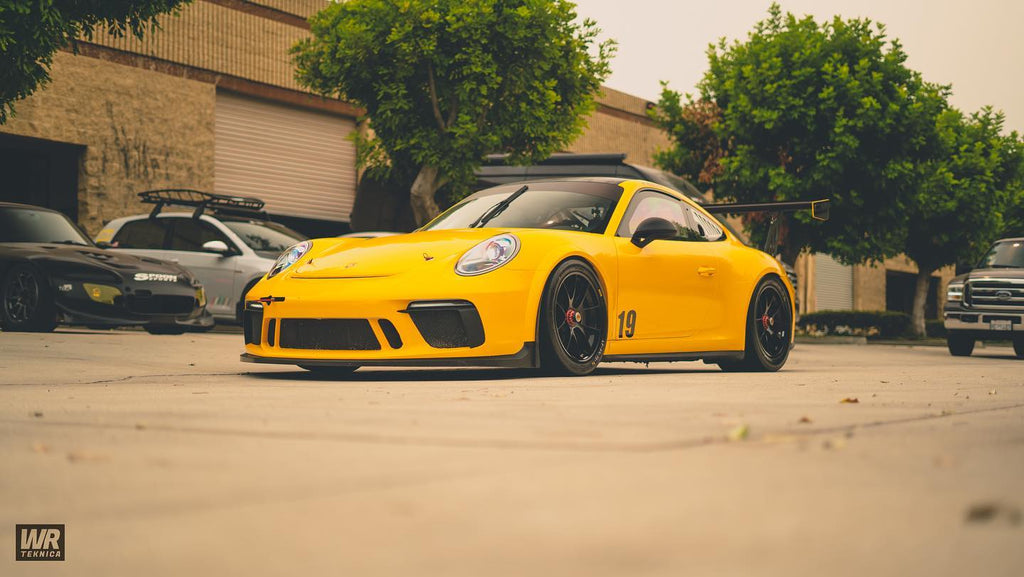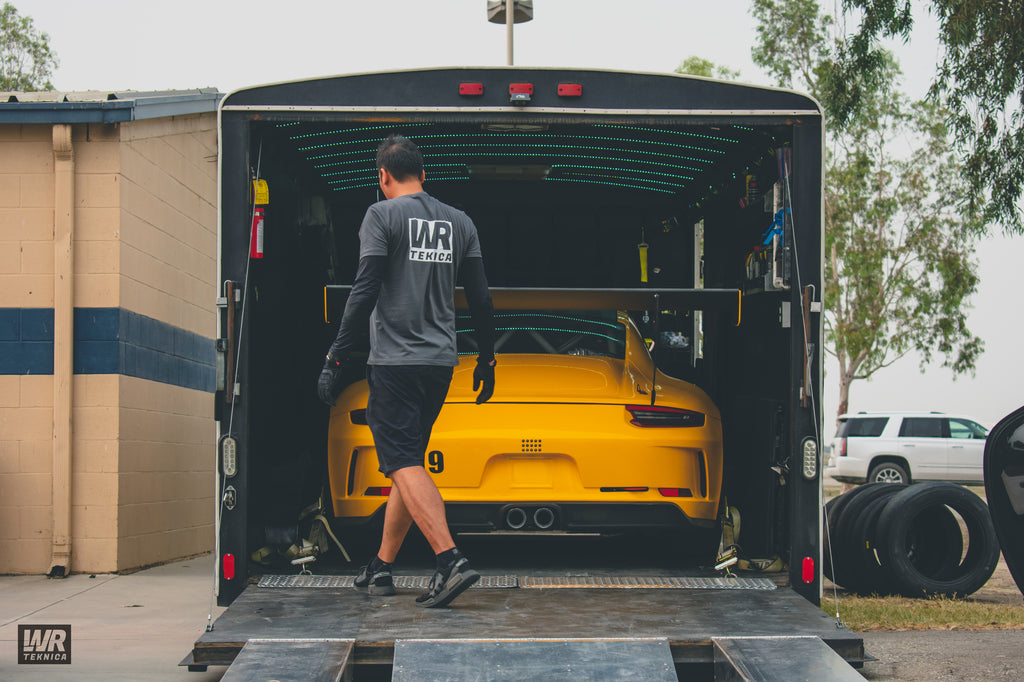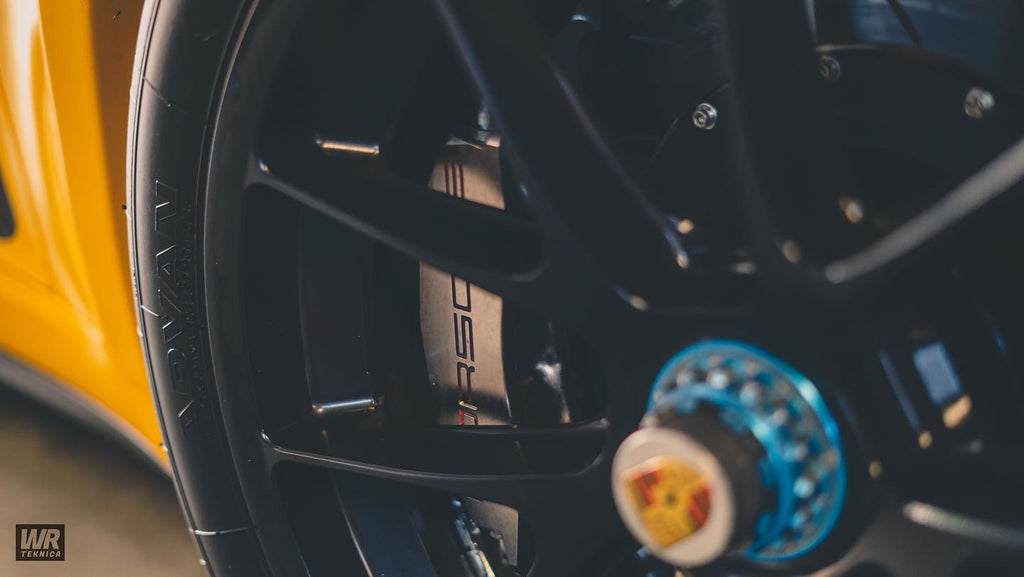Supporting a GT3 Cup Car - and Driver

'Twas 11 pm at night, when the WRTeknica team departed from the HQ to pick up a customer's 911 GT3 cup car from Beverly Hills, CA. We stopped for tacos at our local spot, and filled ourselves in preparation for the journey ahead. When we arrived, the customer was eager and waiting for us to load the car up onto our enclosed trailer for the following track day with Speed District at Buttonwillow Raceway Park.


It took some creative maneuvering to load the cup car due to its low slung nature, but eventually got it in the trailer safe and sound. The customer wanted us to bring a few sets of tires for testing and data gathering, so we loaded those up as well and strapped everything down for the trip back to WRTeknica HQ.

We took off Friday morning from WRTeknica for the trek to Buttonwillow, and with the cup car sorted and inspected the day before, we could focus on our game-plan for the driver and pit routines so that a seamless operation is achieved. With the integrated telemetry tracking software in the car, we're able to monitor everything from drive-train temps to driver inputs, allowing us to make adjustments where need be to optimize the performance of the car.

Each hot pit was a well-oiled process, where we first checked tire temps, followed by tire pressure and a quick debrief from the driver on what he felt in the car. His feedback was crucial to us making adjustments where need be to make the car more confidence inspiring to drive, as the effects of incorrect driver inputs are exaggerated, contrary to it's road going counterpart.

We watched the car hop the Buttonwillow curbs sticking a perfect, synchronized landing every time. The pops heard between each shift thanks to the sequential-gearbox inherent to the cup cars were a real treat. Seeing, smelling, and hearing the car created an ambiance only elsewhere experienced at the most prestigious races in the world. While the Cup car is not too far off the factory GT3 cars in the looks department, it is almost an entirely different car. Engine wise, the cup car comes factory with a 3.8 liter six-cylinder boxer engine that produces 460 horsepower at 7,500 rpm - roughly similar to it's road-worthy sibling. Though the power-train is proved to be as robust as you can get, the biggest advantage seen in the cup car is in the weight, chassis, and brakes.

With the road-going GT3 weighing just about 3,150 pounds, that makes it just about 500 pounds heavier than the cup car. Everything from a carbon fiber hood, doors, and stripped interior are measures taken to ensure as most weight reduction as possible. A smart aluminum-steel composite construction ensures not only weight savings throughout the car, but offers higher rigidity as well. Safety wise, the cup car comes with a roll-cage, racing seats, harnesses, safety net, fire-suppression system, and a rescue hatch in the roof designed for the extrication of the driver. It is the most honest form of a track-prepped, push button race car from factory. 
While the carbon ceramic brakes on stock GT3's provide ample braking, they struggle to find a balance between consistency and cost. The cup car comes from factory with internally vented and slotted brake discs and held in by aluminum six-piston monobloc calipers in the front, and four-piston units in the rear. Race-only brake pads and overall optimized brake ducting allows for the cup car to not only have consistent braking performance, but more cost-effective throughout the track sessions.

In regards to the chassis, the cup car comes with all-adjustable suspension components, along with heavy duty spherical bearings all around. The centre-lock wheel hub assembly is designed to be used with a pneumatic impact gun, contrary to the centre-lock found on road cars which can only be used with a torque wrench. This is due to the fast-nature of routine pitting during a race or track session, where time is of an essence.

With having run several GT3 road cars on track, to running the cup cars, we were able to compare the data from both vehicles and find exactly where the cup car shined the most. We knew what to expect in the pits, as we carried out the same routine with our race cars, but the overall grip of the cup car on track was the outlying factor. The increased wheel-base, slick tires, light-weight construction, and heightened braking performance proved the cup car to be an absolute track weapon.

Following a day of gathered driver and car performance data, we concluded what changes were needed done to the pairing. After loading up and packing up all our equipment, we headed back to base to go over the cup car once more to make the final adjustments for the upcoming Laguna Seca event in October. Laguna is a much more demanding track than Buttonwillow in all aspects, and will help unlock new undiscovered data to push the limits of both vehicle and driver.


Leave a comment